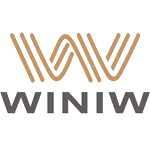The global artificial leather industry is undergoing a transformative phase, driven by shifting consumer preferences, technological advancements, and heightened environmental awareness. As synthetic alternatives to natural leather gain momentum, the sector is poised for significant growth, particularly in sustainable and high-performance applications. This article explores key trends, innovations, and opportunities shaping the future of artificial leather, with a focus on sustainability—a critical driver of modern market dynamics.
Market Growth and Environmental Imperatives
The artificial leather market is expanding rapidly, with global revenues projected to exceed $23 billion by 2025, fueled by a compound annual growth rate (CAGR) of 5.8%. China, the world’s largest producer and consumer, accounts for over 40% of global output, with its synthetic leather production reaching 167.65 million tons in 2022. This dominance is supported by robust demand in automotive, furniture, and fashion sectors, where artificial leather’s cost-effectiveness and versatility are prized.
However, the industry’s growth is increasingly tied to sustainability. Traditional artificial leather relies on PVC and PU, which raise concerns about chemical pollution and non-biodegradability. In response, manufacturers are pivoting to eco-friendly alternatives, such as plant-based polymers, recycled materials, and bio-degradable synthetics. For instance, bio-fermentation techniques are emerging to reduce carbon footprints and water usage, aligning with global net-zero goals.
Technological Innovations Redefining Performance
Advancements in material science are bridging the gap between synthetic and natural leather. Key innovations include:
- High-Performance PU Leather: Modern polyurethane (PU) variants offer enhanced breathability, elasticity, and durability, making them ideal for luxury fashion and automotive interiors.
- Microfiber Technology: Ultra-thin microfiber-based leather mimics the texture and softness of genuine leather, appealing to premium markets.
- Functional Enhancements: Antimicrobial coatings, flame retardancy, and UV resistance are being integrated to meet specialized demands in healthcare, automotive, and outdoor applications.
These innovations are not only improving product quality but also enabling customization—a growing trend among consumers seeking personalized designs and textures.
Sustainability as a Competitive Edge
Environmental regulations and consumer ethics are reshaping the industry. For example:
- Regulatory Pressures: China’s stringent environmental policies, such as emission controls and green manufacturing standards, are pushing firms to adopt cleaner production methods.
- Circular Economy Initiatives: Companies are investing in recyclable and biodegradable materials. For instance, some brands now use plant-based PU derived from corn or castor oil, reducing reliance on fossil fuels.
- Certifications and Transparency: Eco-labels like OEKO-TEX and certifications for low-VOC (volatile organic compound) products are becoming critical for market differentiation.
These efforts are resonating with eco-conscious consumers, particularly in Europe and North America, where demand for cruelty-free and sustainable products is surging.
Emerging Applications and Regional Opportunities
While traditional sectors like footwear and furniture remain staples, new applications are driving growth:
- Automotive Interiors: Synthetic leather’s durability and ease of maintenance make it a preferred choice for car seats, dashboards, and steering wheels. The rise of electric vehicles (EVs) further amplifies this demand, as EV manufacturers prioritize lightweight, eco-friendly materials.
- Smart Textiles: Integration with wearable technology and smart home devices is opening niches in tech-driven markets.
- Emerging Markets: Africa and Latin America are witnessing rapid growth due to urbanization and rising disposable incomes, offering untapped potential for affordable synthetic leather products.
Challenges and Strategic Outlook
Despite its promise, the industry faces hurdles:
- Cost Barriers: Sustainable materials often entail higher production costs, challenging price-sensitive markets.
- Trade Barriers: Geopolitical tensions and anti-dumping measures in regions like the EU could disrupt supply chains.
- Consumer Perception: Overcoming the stigma of “cheap alternatives” requires aggressive marketing to highlight premium and eco-friendly attributes.
To thrive, companies must prioritize R&D investments, forge partnerships for material innovation, and leverage digital tools like AI-driven production to enhance efficiency.
Conclusion
The artificial leather industry stands at a crossroads, where sustainability and innovation are no longer optional but imperative. As technologies evolve and consumer preferences shift toward ethical consumption, the sector is set to redefine luxury, functionality, and environmental responsibility. For businesses, aligning with these trends will unlock vast opportunities in a market projected to grow exponentially over the next decade.
By focusing on eco-friendly materials, cutting-edge applications, and strategic global expansion, stakeholders can position themselves at the forefront of this dynamic industry.

 EN
EN








































